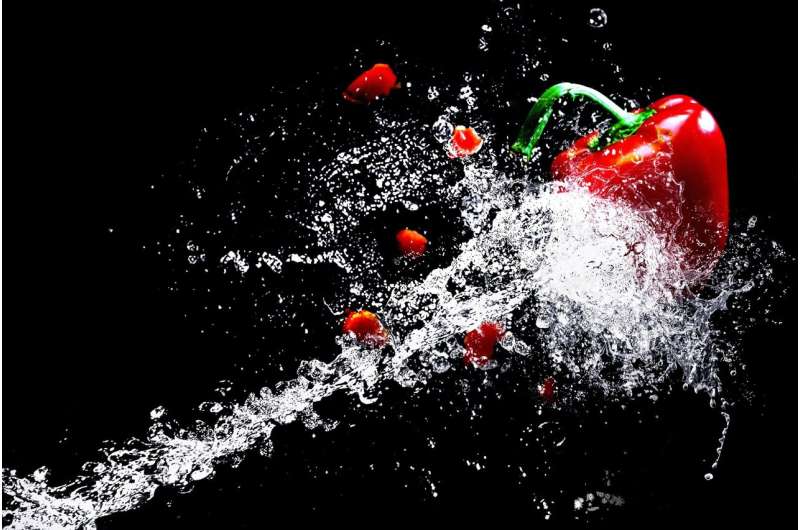Elastic nozzles could create more stable liquid jets

Until now, little attention has been paid to the flow of liquid through deformable elastic nozzles. New research published in The European Physical Journal Special Topics introduces the concept of passively-deforming nozzles, and shows that softer nozzle materials can produce more stable jets across a wide range of flow rates. The research team was led by Andrew Dickerson at the University of Tennessee, U.S.
New experiments show that nozzles which deform as liquid flows through them could help to improve the stability of liquid jets in many different scenarios
When a liquid jet is squirted through a nozzle, it will eventually break up into a string of droplets. Through previous studies, researchers determined that the distance from the nozzle where this breakup occurs depends on a wide range of factors: including the nozzle's shape, and the movement of air surrounding the jet. So far, however, little attention has been paid to elastic nozzles, which can deform as liquids pass through them. The team led by Dickerson introduces the concept of passively-deforming nozzles, and shows that softer nozzle materials can produce more stable jets across a wide range of flow rates.
Liquid jets are found in an extensive array of applications: including cleaning, cutting, inkjet printing, and drug delivery in medicine. Across these different scenarios, it is often crucial for users to control the distance at which these jets break up, allowing them to carefully adjust the frequency and sizes of the resulting drops as they hit their targets. This length is tied to several different factors: including surface tension, liquid viscosity, and jet velocity. Currently, methods for controlling the breakup length include mixing the jet with a flowing gas, altering the nozzle's geometry, and manipulating the jet after leaving the nozzle.
To assess the influence of deforming nozzles, Dickerson's team constructed new equations to account for the interconnection between the flow of liquid and the elastic nozzle's dilation. They then tested the accuracy of their mathematics using a series of simple nozzles—where a 0.5 mm hole was punched into different elastic membranes, each with a different stiffness. As they squirted liquid through these nozzles, the researchers found that the softest, most deformable materials provided the most stable jets across a wide range of flow rates. Their results provide valuable insights into how the stability of liquid jets could be improved—ultimately enabling their users to hit their targets more accurately.
More information: Md Emazuddin Alif et al, Liquid jet stability through elastic planar nozzles, The European Physical Journal Special Topics (2022). DOI: 10.1140/epjs/s11734-022-00656-w
Provided by Springer




















